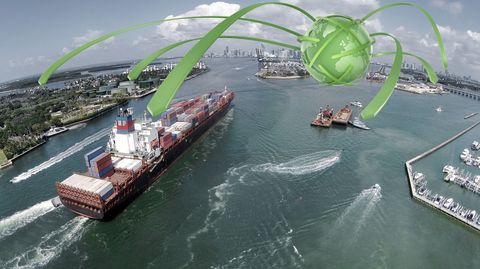The international food trade is one of the world's most important industries, with its performance impacting not only the businesses and stakeholders involved, but also having wider repercussions on the health and wellbeing of the global populace.
The crucial role of food security in the economic prosperity of a given area is as prominent in the Asia-Pacific region - which is home to three billion people - as it is anywhere else. However, a new report has indicated that a number of systemic issues may be stifling the free movement of food products across Asia at the moment, a problem that is having a number of knock-on effects.
As a result, the Asia-Pacific Economic Cooperation (APEC) Business Advisory Council - which commissioned the research - is calling on governments across the region to work together with businesses to address these prevalent non-tariff barriers to trade as quickly as possible to ensure the process does not become prohibitively difficult and expensive.
The biggest problems
The report, carried out by the University of Southern California's Marshall School of Business, drew upon interviews with more than 400 business people, experts and officials from the region, and cited a preponderance of red tape, opaque administrative processes and arbitrary food-trade rules as being key barriers to efficient trade.
More than half of the businesses interviewed deemed the current trading environment for food and agriculture products to be highly restrictive, with dense systems of regulations and arbitrary standards without scientific grounding leading to rising prices, lower food quality and harsher business conditions. Customs and other import procedures were also often seen as slow, costly and excessive.
Although average tariff rates across the 21 APEC member economies have progressively fallen, non-tariff measures in agriculture and food trade continued to increase, with research from the New Zealand Institute of Economic Research estimating that such measures cost the APEC region US$790 billion (€744 billion) in 2011, raising transaction costs three times higher than tariffs.
Causes and effects
The report highlighted a number of reasons why these issues are occurring, including a lack of a unified and consistent approach to non-tariff measures, barriers being imposed as a consequence of trade disputes, the implementation of protectionist policies designed to safeguard local producers, or problems of efficiency and poor organization.
It was also shown that economies tended to lean toward more protectionism when the concept of food security was conflated with domestic food self-sufficiency, rather than engaging in trade. This philosophy, though rooted in socioeconomic welfare, often leads to inefficient agricultural sectors.
Moreover, the report indicated a divide in perceptions between businesses and government officials on this matter. While 80 per cent of business executives believe that regulations are becoming more complex and opaque, only 31 per cent of government representatives agreed; meanwhile, 68 per cent of businesses believe that current sanitary and phytosanitary requirements are arbitrary, complex and economy-specific, whereas 70 per cent of government officials say the requirements are transparent, science-based and coherent with global standards.
Juan Raffo, the 2016 chair of the APEC Business Advisory Council, said: "Business is reporting that these non-tariff barriers can undermine the whole food supply chain. Exporting and importing food becomes expensive and complex - uncertainty and time delays can cripple small business in particular. That works against lasting food security."
Possible solutions
In order to put an end to these problems, APEC is recommending a number of potential solutions, with a better dialogue between business communities and government decision-makers lying at the heart of its proposals.
Specific recommendations include an increased number of public-private sector partnerships dedicated to addressing issues holding back food trade, as well as the establishment of a single point of contact for traders in key product categories to help simplify the bureaucratic process.
Efforts should also be made to speed up the adoption of digital tools and automated processes, while third-party laboratories could be accredited to help ease capacity and human capital issues. Additionally, it was suggested that the APEC Trade Repository could be expanded to include all agriculture and food regulatory requirements, as improving access to information and allowing ease of comparison across member economies could be a beneficial move.
Mr Raffo said: "This study suggests that what's needed is greater transparency, clearer timeframes and better processes for food trade before, at and behind borders. Measures should be designed to avoid impeding trade. Greater harmonization or mutual recognition of standards for labeling and food safety would help; digital channels hold a lot of promise, too."






